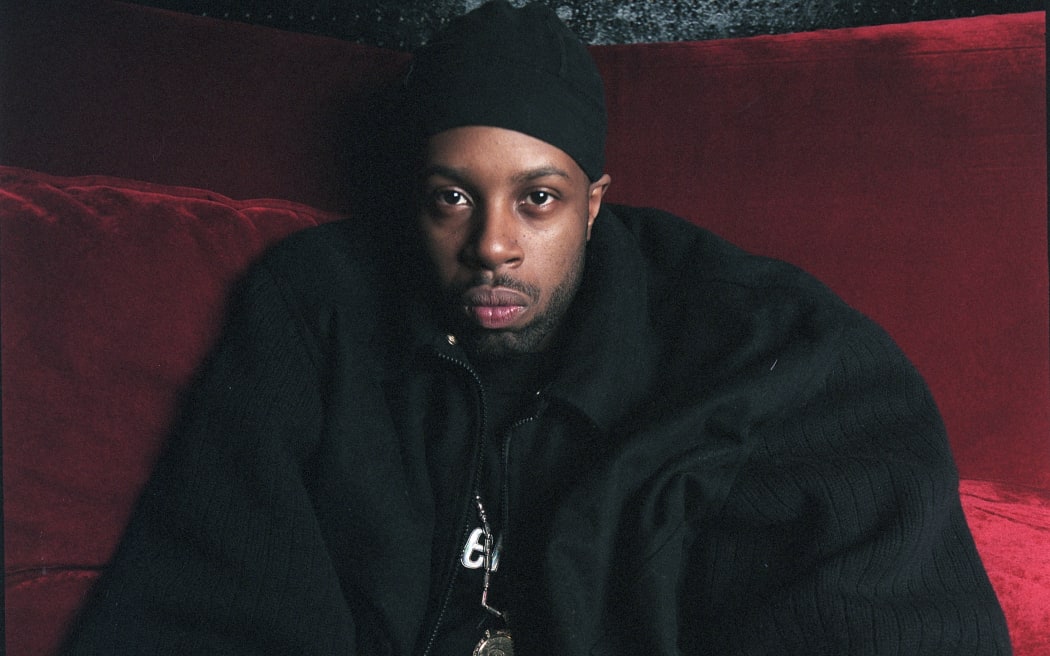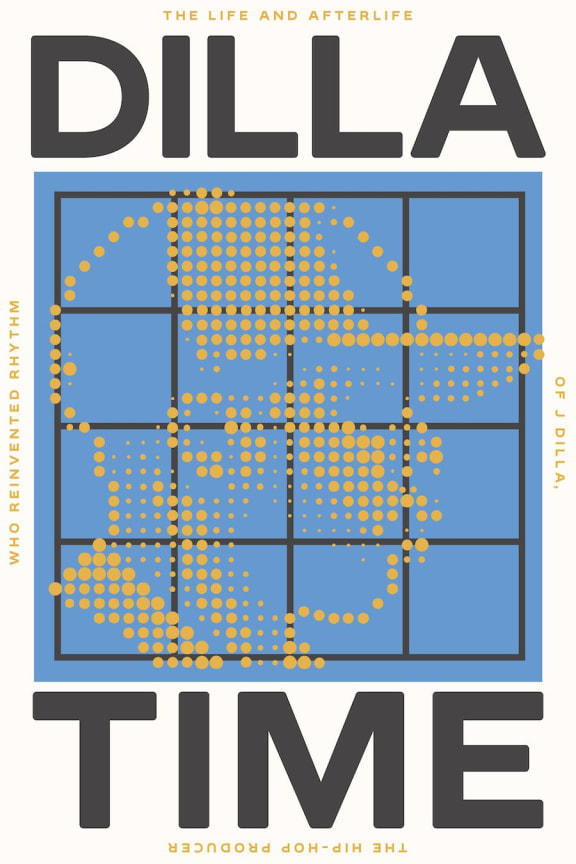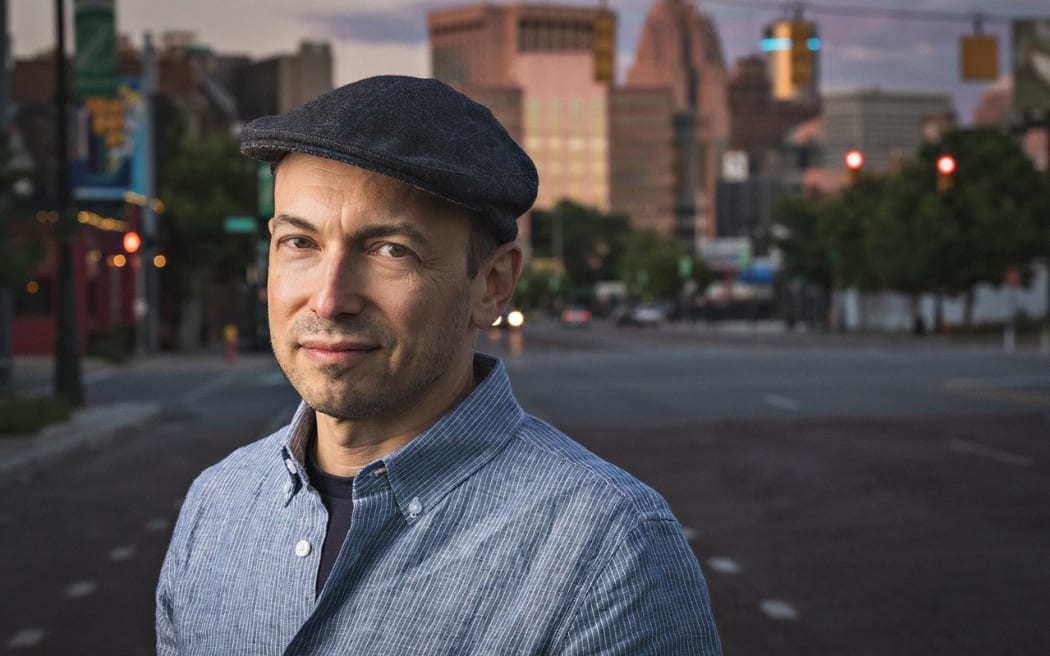Of the thousands of drum machines that have been sold over the years, only one is housed in the Smithsonian Institution.
It belonged to hip-hop producer J Dilla, a man who Ahmir “Questlove” Thompson of The Roots has referred to as “the music god that music gods worship”.
J Dilla – also known by birthname James Yancey, Jay Dee or simply Dilla – died in 2006 at the age of 32 after battling a rare blood disorder.
Last week would have been his 50th birthday.
To celebrate his life and musical innovations, RNZ producer Sam Hollis caught up with New York hip-hop journalist Dan Charnas, the author of the New York Times best-seller Dilla Time: The Life and Afterlife of J Dilla, the Hip-Hop Producer Who Reinvented Rhythm.

Hip hop artist J Dilla of the group Slum Village photographed at the Key Club in 2000 in West Hollywood, California. Photo: Getty Images / Gregory Bojorquez
Charnas was inspired to write about J Dilla when he realised the students he was teaching at New York University 10 years ago, “all had a relationship with J Dilla.”
“They were very young when Dilla was alive. But I knew instinctively why, because Dilla, and his way of making music and specifically his rhythms, had really infiltrated all genres in popular music from R&B to hip-hop to jazz.
“And so, I decided to teach a standalone class on Dilla. The problem was, there was really nothing musically accurate for people to read about exactly what he did. So that was the germ of the idea that became Dilla Time.”
Dilla was born and raised in Detroit.
“The seat of American manufacturers, the seat of the auto industry, but it is also a seat of great American culture.
“Motown came from Detroit, a lot of jazz came from Detroit, a lot of rock came from Detroit, a lot of funk, the George Clinton P-Funk establishment came from there. Detroit is a town with a huge musical legacy.”
When Dilla was coming of age musically, techno was emerging, Charnas says, and Detroit was in sharp economic decline.
“Very few people in the 80s and 90s expected anything good to come out of Detroit, because Detroit had, like a lot of American cities, been sort of used and then abandoned. And that is the story of Detroit
“When it became a majority black city, governments, state government, federal government kind of left it for dead.
“And so Dilla was a child of the city that very few had high expectations for and yet, those are the kinds of environments that produce some of the greatest culture and the greatest art.”
Dilla was mentored by funk musician Amp Fiddler who passed on some of Dilla's demos to Q Tip from A Tribe Called Quest.
“Thank goodness Q Tip actually listened to that demo, because he heard something in that. And he reached out and called James - that's J Dilla’s legal name - and basically said, 'hey, I hear something in your production, it's really singular'.
“And Q Tip became, even though he was a producer himself, an evangelist for Dilla. As a producer, he introduced him to everybody, to De La Soul to Busta Rhymes, some of the greats of ‘90s hip hop... and that is how J Dilla got his start.”

Photo: Macmillan
What made Dilla singular was his finesse with the MPC drum machine and his manipulation of time signatures, Charnas says. The most important of his innovations was colliding two apparently clashing time feels.
“Dilla sort of collided straight rhythms, which are very evenly spaced beats, with swung rhythms, which are uneven and when you collide these two things together, the beat sounds drunken, limping, off, errant.
“But in Dilla’s hands, it was really, really something different. And that became the hallmark of his sound and the thing that became the most imitated by other hip-hop programmers and then eventually by traditional musicians.”
This is what Charnas calls “Dilla time”.
Dilla was a master at using the sequencer in the MPC to create “micro-rhythmic conflicts”, Charnas says.
“He was a master not only of those techniques, but essentially chopping up sample sources into almost unrecognisable pieces and then reordering them. So he would literally take a piece of harmonic material and then re-harmonise it.
“Just an amazing, amazing master of this instrument, the same way that we would call Duke Ellington the master of the piano or the orchestra.”
Dilla’s group Slum Village transformed not just hip-hop, but music more widely, he says.
“The way that they approached rhythm and timbre was always inventive and always new, and it was a perfect accompaniment for his [Dilla’s] rhythmic subterfuge.
"They're just genius, genius MCs…we tend to think of MCs, evaluate rappers by their lyrics, by what they say.
“But Slum Village to me are more distinguishable for their musicality, their rhythms, their tonal choices.”
Dilla’s beats influenced other programmers and traditional musicians alike, Charnas says
"Ahmir Thompson, aka Questlove of The Roots, was one of the first to really, really be like 'what is James doing with those rhythms' and to try to replicate it on his drum set.
"The same way with the D’Angelo who worked closely with Questlove, they just adored Dilla’s production.
“And so, they essentially invited Dilla into their collective which was gathering around a recording studio in New York that used to belong to Jimi Hendrix called Electric Lady.
"And so, it was out of this grouping of musicians, which included you know, guitarists like Charlie Hunter and bassist Pino Palladino, and legendary horn player Roy Hargrove that all these incredible albums came out.”
Those albums include The Roots Things Fall Apart, D’Angelo's Voodoo, Bilal’s 1st Born Second, Common's Like Water for Chocolate and Erykah Badu’s Mama's Gun, he says.
“It's really amazing to think that all of these folks revered a beat maker, somebody whose instrument was a drum machine because they saw, to a person, his musicality.
“It didn't matter that it was an electronic instrument that or that he was a programmer instead of a player. He had musical ideas, new ideas that they found so provocative and so alluring, and that essentially became their aesthetic.”

Hip-hop journalist and author Dan Charnas. Photo: Dan Charnas
Donuts was Dilla’s last recording before his death in 2006.
“His brother, John, also known as Illa J, was driving back from college to go into Detroit to his brother's memorial service, and was listening to Donuts for the first time. And he heard in one of the songs Dilla manipulating a sample to say ‘Johnny do it.’
“He felt that his brother was talking to him from beyond the grave. That's a very, very powerful, evocative thing. And I think a lot of folks latched on to that, the pathos of this album that this person did as their last testament.
“And by the way, it says a lot about the human condition. It's very inspiring, that a person who's faced with death would continue to do this work, to the very end.”
A musical innovator like Dilla is a rare thing, Charnas says.
“This is a profound musical contribution of centenary importance. Innovations like this do not come along every day, or every year.
“Louis Armstrong importing swing and blues tonality into our popular music in the early 20th century. And then decades later, James Brown changes rhythm, changes our rhythmic centre of gravity with funk.
“And it isn't until 1998 that Dilla comes along and adds like a third time feel to our music. That's big.”

